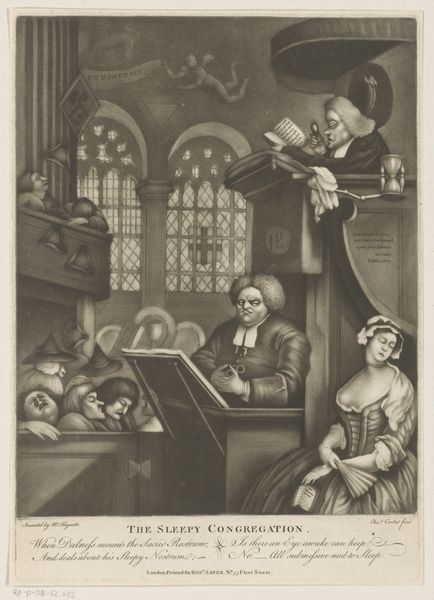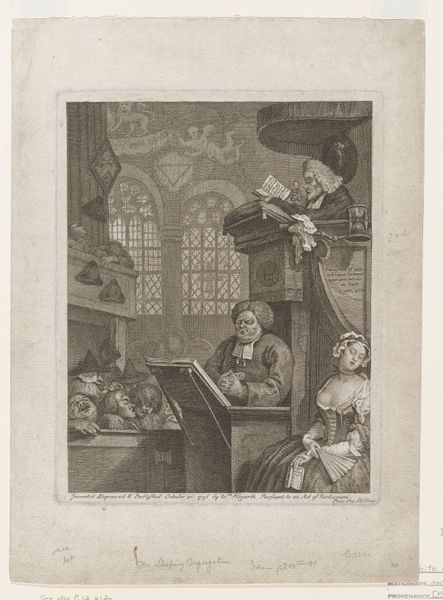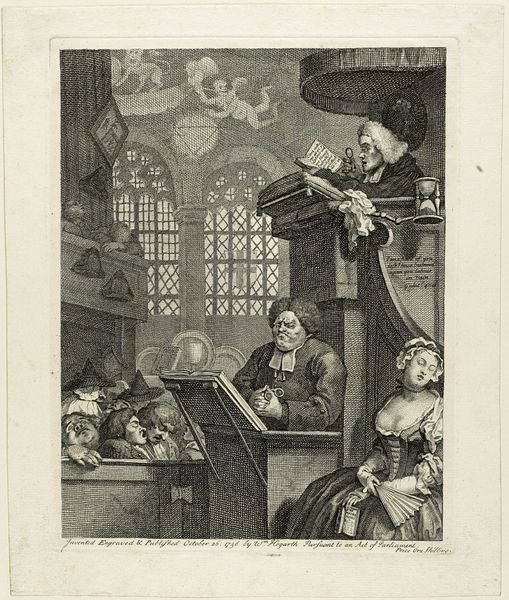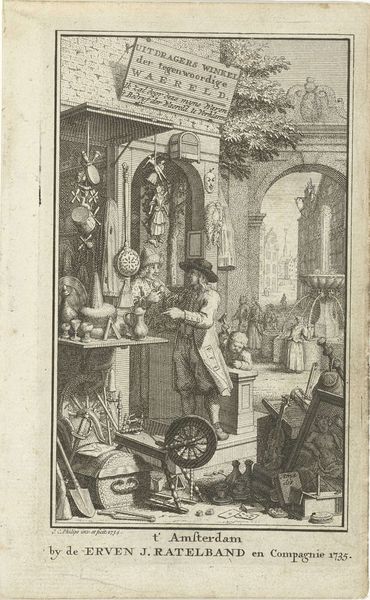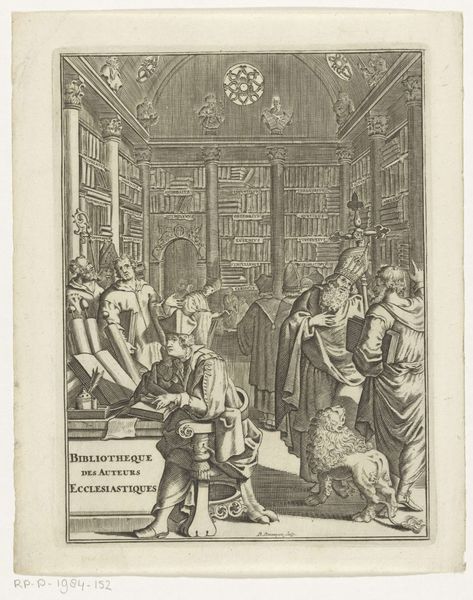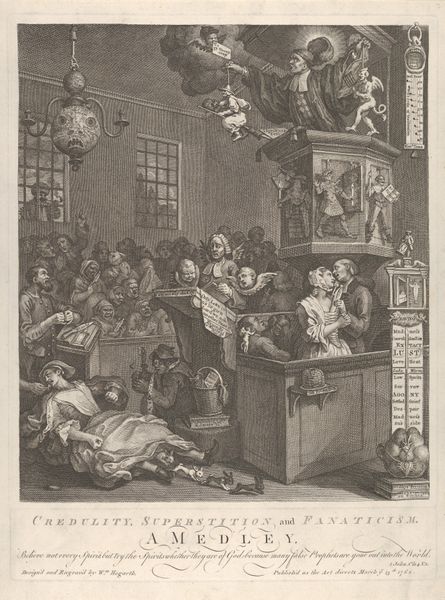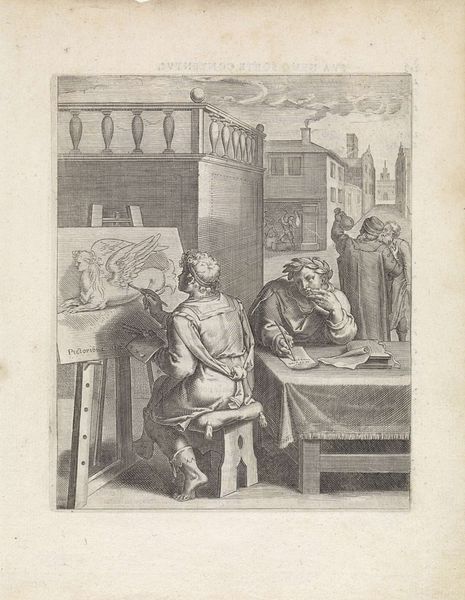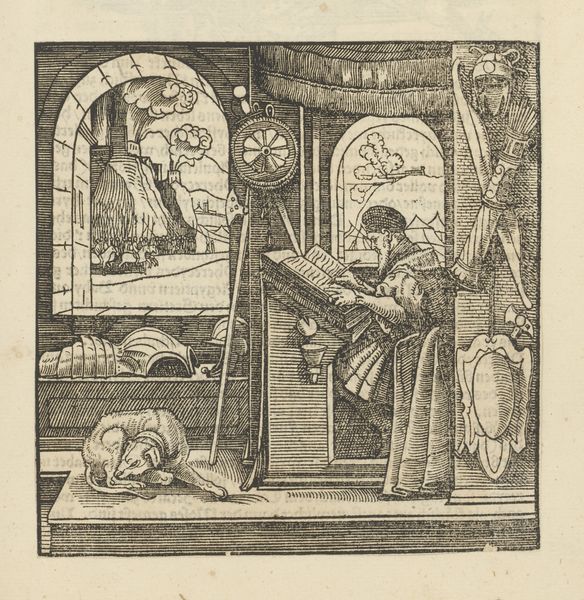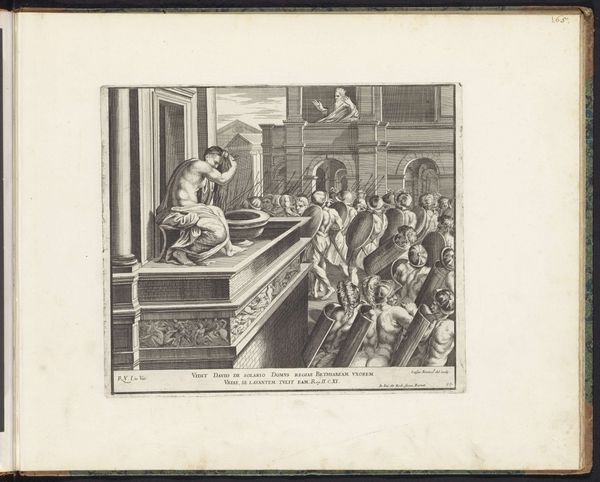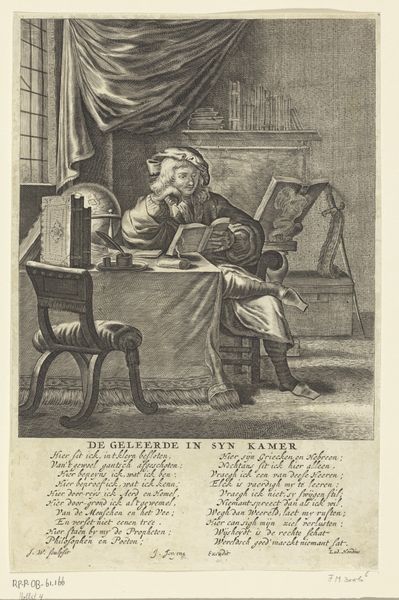
drawing, print, engraving
#
portrait
#
drawing
#
baroque
# print
#
genre-painting
#
history-painting
#
engraving
Dimensions: sheet: 10 5/16 x 7 7/8 in. (26.2 x 20 cm)
Copyright: Public Domain
Curator: We’re standing before William Hogarth’s engraving, “The Sleeping Congregation,” created in 1736. It depicts a church interior teeming with… well, mostly sleep. Editor: It’s remarkably effective, isn’t it? The diagonal composition, the interplay of light and shadow rendered with such precision—creates a sense of drowsy unease. I am mesmerized. Curator: Hogarth was a master of social satire, wasn't he? He wasn't merely rendering reality; he was commenting on it. This piece critiques religious hypocrisy and societal apathy, capturing the decline in religious fervor during the Georgian era. Look at the sleeping parishioners. It is an explicit commentary on society. Editor: Note how the verticality of the architectural structure presses down on the scene below, heightening this visual claustrophobia. See the various points of focus? The lower and upper clergyman sandwich the center scene adding tension and pulling the scene together. Curator: He captured details to further reinforce his point. The hourglass slowly counting away behind the upper clergyman. Or how the expressions vary – some subtly nodding off, others completely lost to slumber. Hogarth used engravings like this to disseminate his social critiques broadly. His works often addressed issues of morality and class in accessible and entertaining ways. He wanted his message to be clearly understood. Editor: Yes, he employs strong contrasts, placing areas of dense crosshatching near the stark emptiness of others. Curator: Precisely. His compositions function almost like theatrical stages, where human foibles are acted out. One wonders if they knew that hundreds of years later people like us would be commenting about this exact print, a perfect record of an imperfect congregation. Editor: Hogarth's genius truly lay in the ability to imbue scenes with multiple layers of interpretation while maintaining a clear artistic language, achieving what all artist strive towards. It resonates on formal and theoretical levels, offering unique viewpoints. Curator: A message for us, centuries later. Well put. Let us proceed.
Comments
No comments
Be the first to comment and join the conversation on the ultimate creative platform.

